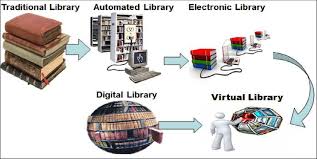The Evolution of Digital Libraries and Virtual Libraries
In the digital age, libraries have undergone a significant transformation, moving from traditional brick-and-mortar institutions to online repositories of knowledge. Two key concepts that have emerged in this evolution are digital libraries and virtual libraries.
Digital Libraries
Digital libraries are online collections of digital resources that can include books, journals, articles, images, videos, and more. These libraries provide users with access to a vast array of information that can be easily searched, accessed, and retrieved from anywhere with an internet connection.
Digital libraries have revolutionized the way we access information. They offer benefits such as easy searchability, instant access to materials, and the ability to store vast amounts of data in a compact digital format. Researchers, students, and the general public can all benefit from the wealth of resources available in digital libraries.
Virtual Libraries
Virtual libraries take the concept of digital libraries a step further by creating immersive online environments that mimic physical library spaces. Users can navigate through virtual shelves, browse collections, and interact with librarians in real-time.
Virtual libraries offer a unique user experience by combining the convenience of digital resources with the personal touch of traditional library services. They provide a sense of community for users who may be geographically dispersed but share common interests or research goals.
The Future of Libraries
As technology continues to advance, we can expect digital libraries and virtual libraries to play an increasingly important role in how we access information. These innovative platforms will continue to evolve to meet the changing needs of users in an ever-expanding digital landscape.
Whether you prefer the convenience of accessing resources online through a digital library or crave the interactive experience offered by a virtual library, one thing is certain – both are shaping the future of information access and knowledge sharing.
Understanding Digital and Virtual Libraries: Key Differences and Types Explained
- What is the difference between digital and hybrid library?
- What is the difference between digital library and virtual library?
- What is the meaning of virtual library?
- What are the 3 types of digital libraries?
What is the difference between digital and hybrid library?
One frequently asked question in the realm of digital libraries and virtual libraries is the distinction between a digital library and a hybrid library. While a digital library exclusively offers online access to its collection of resources, a hybrid library combines traditional physical holdings with digital materials. In a hybrid library, users can access both physical items like books and journals as well as digital content such as e-books and online databases. This blending of formats allows for a more versatile and comprehensive library experience, catering to users who prefer both the convenience of digital resources and the tactile experience of physical materials.
What is the difference between digital library and virtual library?
A frequently asked question regarding digital libraries and virtual libraries is the distinction between the two concepts. While digital libraries primarily refer to online collections of digital resources accessible via the internet, virtual libraries take this concept further by creating immersive online environments that replicate physical library spaces. In essence, digital libraries focus on providing easy access to a wide range of digital materials, while virtual libraries aim to create interactive and engaging user experiences by mimicking traditional library settings in a virtual space. Both serve as valuable tools for accessing information in the digital age, each offering unique features and benefits to users seeking knowledge and resources online.
What is the meaning of virtual library?
A virtual library is an online platform that provides access to a wide range of digital resources, such as books, articles, multimedia content, and databases. Unlike traditional libraries housed in physical buildings, a virtual library exists in the digital realm, allowing users to browse, search for, and access information remotely through the internet. Virtual libraries aim to replicate the experience of visiting a physical library by offering interactive features, personalized services, and virtual spaces for users to explore and engage with digital collections.
What are the 3 types of digital libraries?
When exploring the realm of digital libraries, one frequently asked question is: “What are the 3 types of digital libraries?” Digital libraries can be categorized into three main types: institutional repositories, thematic repositories, and national libraries. Institutional repositories focus on preserving and sharing the intellectual output of a specific institution, such as a university or research organization. Thematic repositories center around a particular subject or theme, curating resources related to that specific topic. National libraries serve as comprehensive collections of a country’s cultural heritage and knowledge, making them valuable resources for researchers and the general public alike. Understanding these three types of digital libraries can help users navigate the vast array of digital resources available online.

